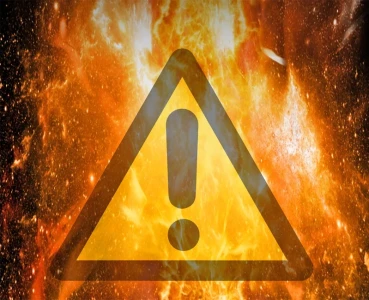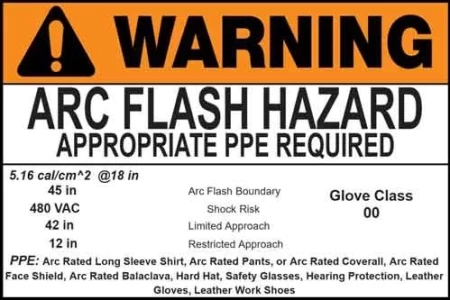Understanding the Complexity of Arc Flash Hazard Analysis

Arc flash incidents pose a constant threat to the safety of workers interacting with electrical systems. Conducting a comprehensive arc flash hazard analysis is a fundamental step in mitigating these hazards. However, this analysis is far from simplistic; electrical engineers and safety professionals must navigate a web of technical complexities to accurately evaluate risks and implement effective protection strategies.
Arc flash hazard analysis is a critical process in electrical safety management, designed to assess the potential risk of arc flash incidents within electrical systems. These incidents can cause devastating effects, including severe injury or death to personnel, as well as significant damage to equipment.
Visit Our Arc Flash Study Course
Key Challenges in Arc Flash Hazard Analysis
- Dynamic Electrical Systems: Electrical systems are rarely static; they undergo modifications, expansions, and equipment upgrades. These changes can significantly alter fault current levels, equipment ratings, and protective device coordination. Arc flash hazard analyses must be revisited regularly to reflect these changes, ensuring they don't become obsolete.
- Data Inaccuracies and Assumptions: The foundation of an arc flash analysis lies in accurate system data. Outdated one-line diagrams, missing equipment specifications, or incorrect assumptions about conductor sizing introduce errors that propagate through calculations. Thorough system documentation and field verification are essential to minimize these inaccuracies.
- Modeling Limitations: Even advanced arc flash calculation software relies on models that simplify real-world phenomena. Factors like arcing fault dynamics, contact resistance, and equipment wear and tear all influence incident energy but can be challenging to perfectly model.
- Evolving Standards and Methods: The regulatory landscape surrounding electrical safety continues to progress. The methods for determining incident energy and arc flash boundaries are outlined in standards such as IEEE 1584 and NFPA 70E, and these standards are periodically updated. Staying abreast of the latest safety best practices is essential.
Strategies for Addressing Complexity
- Conservative Approach: In situations with data uncertainty or potential variability in system conditions, erring on the side of caution is prudent. This may involve making conservative estimations of fault current or assuming worst-case scenarios for clearing times.
- Sensitivity Analysis: Assess the impact of data uncertainties on calculations. Changing parameters within a reasonable range can indicate how sensitive the final incident energy results are to specific data inputs. This helps identify areas where greater data accuracy is critical.
- Utilizing Experienced Professionals: Arc flash hazard analyses should ideally be performed or reviewed by qualified electrical engineers or safety specialists. Their experience and knowledge can ensure the proper application of standards and the identification of any subtle factors influencing the calculations.
- Prioritizing High-Risk Areas: A comprehensive hazard analysis for an entire facility can be resource-intensive. It may be strategic to start with higher voltage systems, areas with limited working space, or locations with a history of electrical incidents.
The Complexity of Hazard Analysis
Conducting an arc flash hazard analysis involves understanding and evaluating numerous variables that contribute to the risk and severity of an arc flash event. The complexity of these analyses stems from the intricate nature of electrical systems and the variety of factors that must be considered.
System Configuration
The configuration of an electrical system plays a significant role in arc flash hazard analysis. Systems with complex network arrangements, multiple power sources, or varying operational modes present challenges in accurately modeling and assessing arc flash potential. Engineers must understand how these configurations impact the flow of electrical current and the potential points of fault that could lead to an arc flash.
Fault Current Analysis
The magnitude of fault current is a critical parameter in determining the severity of an arc flash. Higher fault currents can lead to more severe arc flash incidents. Conducting a thorough fault current analysis involves detailed study of the electrical system’s capabilities and the worst-case scenarios that could lead to high fault levels. This analysis is essential for accurately estimating the incident energy, which directly relates to the potential hazard level.
Protective Device Coordination
Protective device coordination is essential in mitigating arc flash risks. Proper coordination ensures that protective devices operate effectively to isolate and minimize the impact of a fault. Miscoordination can lead to extensive damage and increased risk of arc flash, as it may delay the isolation of faulted sections, allowing more energy to be released during an arc flash event.
Technical Considerations in Analysis
Performing an arc flash hazard analysis requires a detailed understanding of electrical engineering principles, system design, and safety standards. Engineers use sophisticated modeling software to simulate electrical system behavior under fault conditions, calculating the incident energy levels and determining the necessary safety measures.
Selection of Personal Protective Equipment (PPE)
Based on the results of the hazard analysis, the appropriate level of PPE must be selected to protect workers from the thermal and blast effects of an arc flash. This selection process is guided by the calculated incident energy and the specific requirements of the workplace.
Advantages of Comprehensive Arc Flash Analysis
A well-conducted arc flash hazard analysis offers numerous benefits. It ensures compliance with safety standards, such as NFPA 70E and IEEE 1584, and helps in creating a safer working environment. By identifying the specific hazards of an electrical system, it enables targeted safety measures, reducing the likelihood and potential impact of arc flash incidents.
Challenges and Limitations
Despite its importance, arc flash hazard analysis faces several challenges. The dynamic nature of electrical systems, frequent changes in configuration, and the variability in operational conditions can complicate the analysis process. Additionally, the need for specialized knowledge and equipment can be a barrier for some organizations, leading to potential oversights in safety planning.
Continuous Improvement and Future Directions
The field of arc flash hazard analysis is continuously evolving, with advancements in technology and methodology enhancing the accuracy and efficiency of these studies. Future developments may include more sophisticated predictive models, real-time monitoring systems, and advanced protective technologies that further reduce the risks associated with arc flash.
Conclusion
Understanding and mitigating the risks of arc flash through comprehensive hazard analysis is essential for ensuring electrical safety. By considering the complex interplay of system configuration, fault current, and protective device coordination, organizations can effectively manage the arc flash hazards and protect their employees and assets from the severe consequences of these dangerous events.
Successfully navigating the complexities of arc flash hazard analysis requires a combination of technical expertise, meticulous data handling, and an ongoing commitment to safety. By addressing challenges and making informed decisions, companies can create a safer working environment where the risk of arc flash injuries is substantially reduced.






